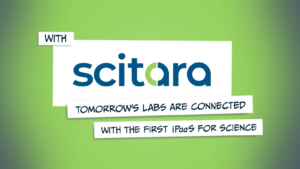In November 2022, Scitara’s Dave Levy sat down with Patrick Pijanowski, Managing Director at Accenture Scientific Informatics Services, to discuss the problems and complexities of working with legacy lab informatics.
Captured as part of our ongoing Scitara Connect podcast series, the conversation shed new light on an age-old question facing analytical labs: how can you create an agile, future-ready infrastructure without completely dismantling the foundation that infrastructure is built on?
And what’s so bad about legacy systems, anyway?
According to Levy and Pijanowski, finding the answers is critical to a successful digital transformation.
The complex legacy of legacy informatics
For many of today’s labs, the building blocks of lab infrastructure were introduced decades ago. Over time, this has created two serious problems:
- Cloud technology isn’t fully leveraged
While many legacy systems have implemented a cloud component, many of these platforms weren’t originally designed for the cloud. This kind of patchwork solution worsens user experience and makes it impossible to create a common lab data fabric. - Not everyone’s an expert
Many legacy systems can’t be implemented or maintained without highly specialized skill sets—which can easily become a barrier to progress and innovation.
With data trapped in point-to-point connections and vendor-controlled repositories, many labs experience a kind of “pilot purgatory” in which LIMS/LES projects stall—and digital transformation is stunted.
Getting things back on track means getting connected—and separating data mobility from that connectivity layer.
Agility, modularity and connectivity
The first step in building a more modern, more flexible lab infrastructure balanced on legacy informatics is distilling those informatics back down to their essential functions—and removing any layers of customized functionality that may have been added over the years.
Modules of newer, digital technology can then be plugged into this framework to connect disparate instruments, applications and systems—so workflows can be automated, and data can be mobilized across the entire lab enterprise.
But unless that new technology aggregates data in its own designated layer, data will be trapped in a vendor-controlled repository that delays research and undermines lab projects.
For industry leaders like Levy and Pijanowski, the key is digital decoupling—separating system connectivity from data aggregation so data can be accessed anytime, anywhere by the scientists who need it.
If you’ve got that, you’ve got a ticket to true modernization.
The first iPaaS for science
Scitara’s iPaaS for science is the universal connectivity solution analytical labs have been waiting for—a cloud-based, peer-to-peer platform that seamlessly integrates new and legacy systems.
It’s the only way a lab can complete its digital transformation, accelerate research and maintain control of data while continuing to capitalize on its initial informatics investments—and it’s helping life sciences leaders rethink everything without rebuilding everything.
In the race to go paperless, it’s a critical advantage that enables labs to maximize ROI.
And for Levy and Pijanowski, it’s reason to believe the future for analytical labs is bright.
Hear the whole conversation here—or connect with a Scitara expert to learn more.
